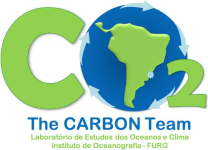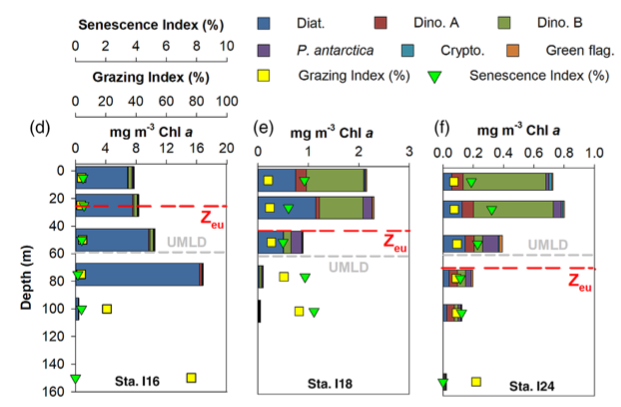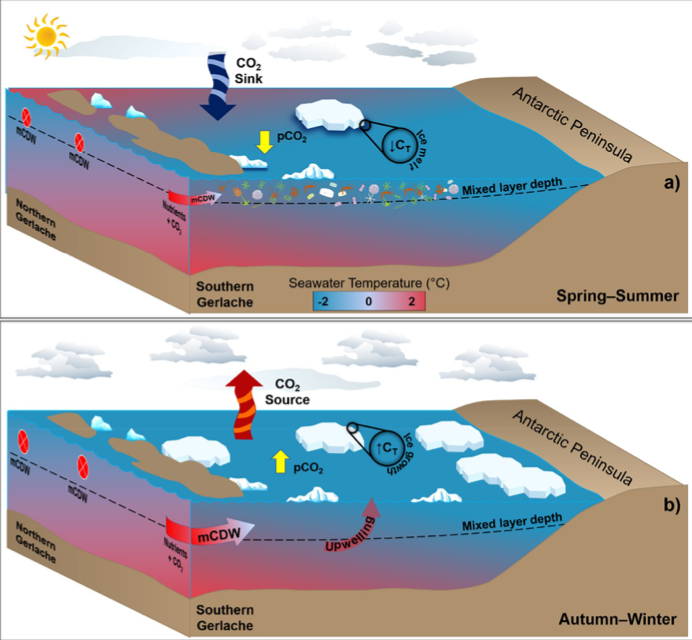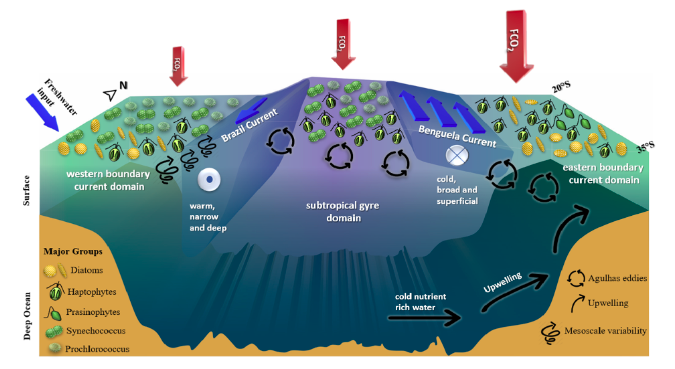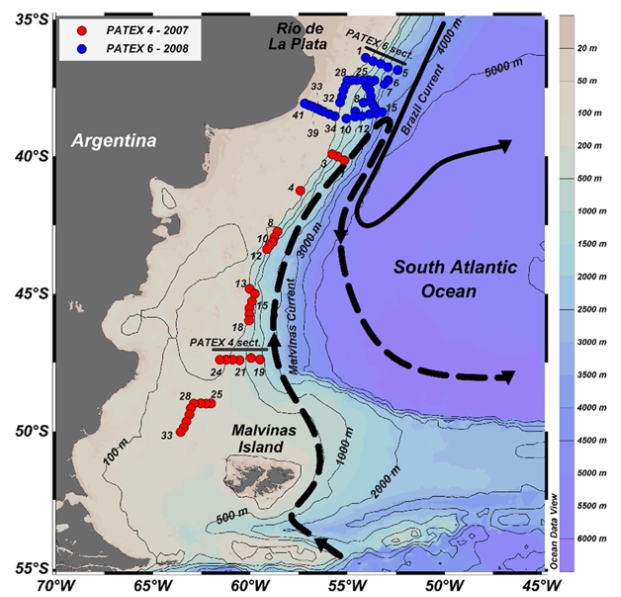Lista completa de publicações
Lista de publicações de artigos científicos liderados ou com colaboração dos pesquisadores do grupo CARBON Team (LEOC - IO - FURG).
2026
Senger et al. Distinct phytoplankton groups as key drivers modulating summer CO2 uptake in the northern Antarctica Peninsula. MEPS.
2025
2024
Kerr et al. Hydrographic Atlas of the South Brazil Bight and the Southern Brazilian Shelf. [Kerr et al. Dados do Atlas] [Garcia et al. Relatório Técnico]
Highlights Manta et al.
• Overturning maximum is 15.64 ± 1.39 Sv; Meridional heat and freshwater transport are 0.27 ± 0.10 PW and 0.23 ± 0.02 Sv, respectively.
• Excluding the mesoscale eddies from the section increased the meridional heat transport by 0.12 PW.
• The distribution of water masses and currents reflects the favorable position of the section for observing.
Highlights Henley et al.
• This assessment of Southern Ocean biogeochemistry has assimilated existing knowledge and presented new data that show the integral role of biogeochemical cycling – of iron, carbon and major nutrients in particular – in supporting marine ecosystem functioning and regulating sea-air CO2 fluxes at regional and global scales.
Highlights Ferreira et al.
• The response of regional phytoplankton communities is expected to differ at short- and long-term, an overall trend toward smaller flagellates is expected.
• Five main research gaps in the current understanding on phytoplankton response to climate change in the NAP are identified.
• Achieving these goals will only be possible with the inter-collaboration of Antarctic research programs and scientific community under a common research framework.
Highlights Azar et al.
• The SACW is composed by four STMW varieties and is the dominant water in the tropical Atlantic.
• ∼34% of Subtropical Indian Mode Water (STIMW) contributes to the mixing fraction of the South Atlantic Central Water.
• An averaged STIMW volume transport of 5.5 ± 3.2 Sv is estimated between 1993 and 2017 towards the South Atlantic.
• ∼20% of STIMW reaches the North Brazil Current through the southern South Equatorial Current bifurcation.
• Cyclonic and anticyclonic eddies transport similar mixing fractions of mode water varieties.
Highlights Costa et al.
• The low grazing indices and the high diatom biomass observed in the NAP suggest that the diatom bloom was in a fast sinking process.
• Observations corroborate the concept that highly productive Antarctic coastal marine ecosystems are effective biological carbon pump systems.
• This scenario represents a low energy input from the primary producers to the classic short diatom–krill–whale Antarctic food chain.
Highlights Monteiro et al.
• The spatial variability of the carbonate system parameters is clearly greater in spring and summer than in autumn and winter.
• The carbonate system parameters on the surface of the strait follow seasonal FCO2 dynamics, that is, sea ice dynamics.
• The effects of intensified summer CO2 uptake on calcite and aragonite saturation in surface waters may emerge in the coming years.
Highlights Carvalho et al.
• CO2 fluxes vary from small outgassing to strong sink conditions.
• Enhanced CO2 uptake on the western domain was associated with salinity variations.
• Increased haptophyte concentrations boosted the CO2 uptake in the gyre.
• Intense CO2 uptake in the eastern domain (30°S) was associated with haptophytes.
Highlights Monteiro et al.
• We analysed the CO2 system in an important region of the Southern Ocean.
• The Gerlache Strait acts as a stronger CO2 sink than nearby open ocean areas during the austral summer.
• We identified both strong and near-equilibrium sink scenarios for FCO2 from 1999 to 2017.
• The pattern of variability of FCO2 has changed since 2012 to a higher frequency of years with a strong CO2 sink.
Highlights Orselli et al. 2018
• Carbonate system has been driven by dilution/evaporation and sea–air CO2 exchanges.
• The Patagonian shelf is a key area of anthropogenic carbon uptake.
• SACW is acidifying faster in the Patagonian shelf-break than in the South Atlantic.
• AAIW is under risk for aragonite undersaturation near the Patagonian shelf-break.
Página 1 de 2
